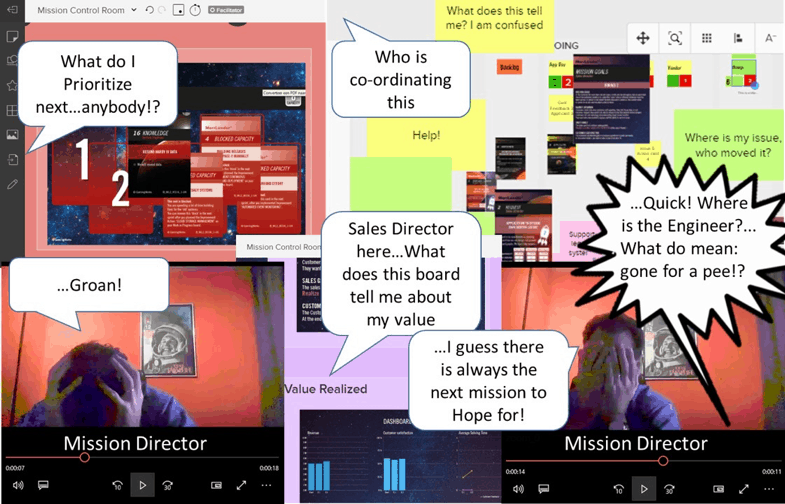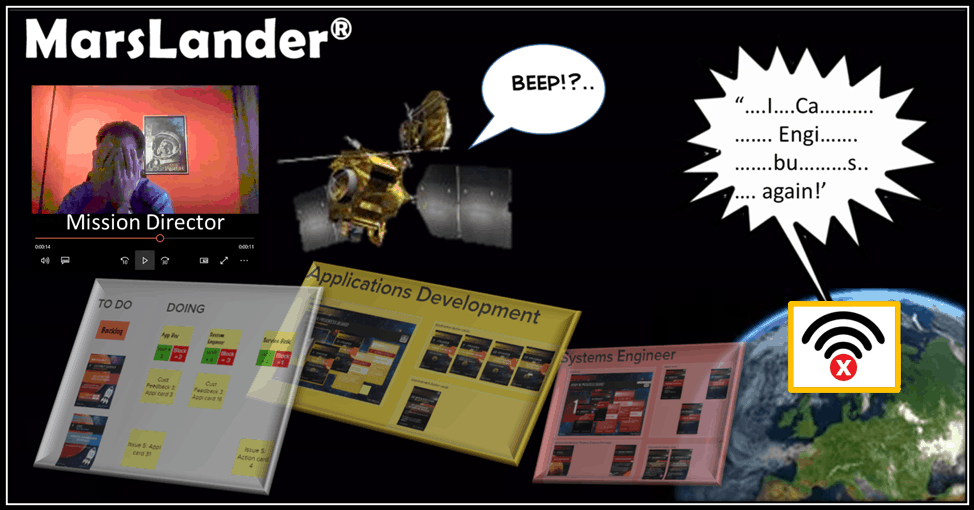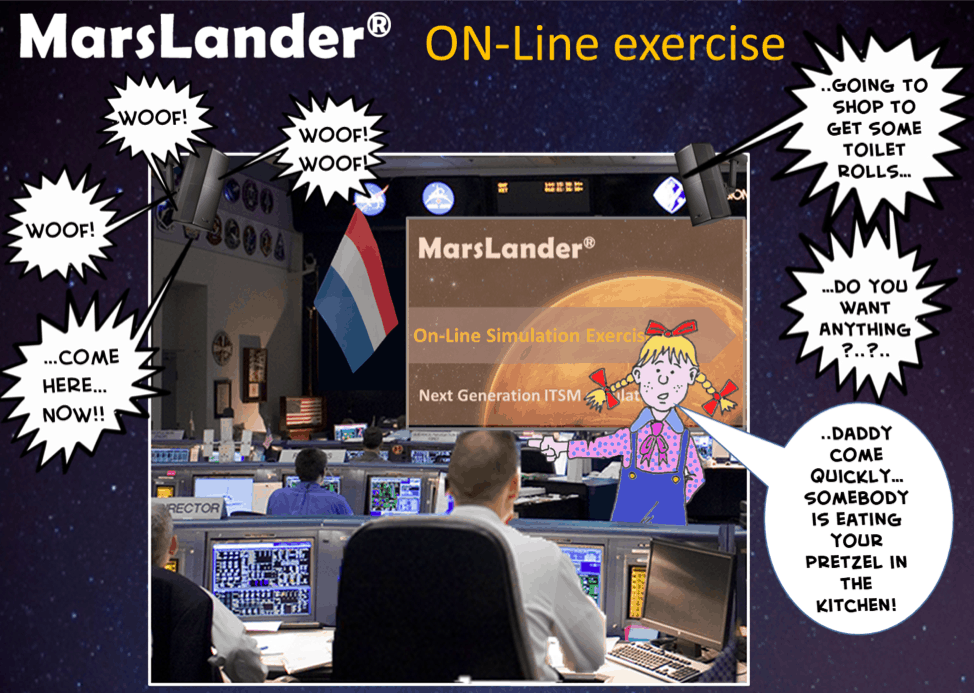We live in an era of digital disruption. However, nobody could have foreseen just how big a disruption, as a result of the COVID-19 crisis experience, we are all living. Change has been brutally thrust upon us. It’s not a question of gaining buy-in for the change and letting people shape their own change. We’re experiencing the hard reality of change being imposed upon us with all of its ugly consequences. And we’re experiencing remote communication issues.
Working from home has become an imperative, and new skills and behaviors to communicate and collaborate remotely are now becoming necessary core skills and behaviors for employees everywhere.
Even before the COVID era communication and collaboration were seen as critical lacking skills within IT organizations. Collaboration was a number 1 skill required in a DevOps survey and “Collaborate and promote visibility” is a core guiding principle in ITIL 4.
However we still have siloes, still struggle with “them and us” cultures, and still struggle to develop end-to-end ways of working.
The fact is we still have siloes, still struggle with 'them and us' cultures, and still struggle to develop end-to-end ways of working – @GamingPaul #ITSM Share on XA fool with a tool…
“Don’t worry. A collaboration tool will solve that!” It’s a response we often revert to in IT, perhaps because we are in a technology industry we believe that a tool will solve all our problems!
So, each of the siloes went out to buy their own points solutions: We see an explosion in CI/CD tools, Jira, and IT service management (ITSM) teams buying the latest, greatest ITSM tool suites.
In many cases, we simply added another layer into the difficulties of collaboration and our frustrating experiences. We already had:
- People (different cultural values, purpose (goals), language, tribalism)
- Process (DevOps flow vs. ITIL and ITSM processes, bureaucracy born from poor implementations, framework protectionism).
And now fragmented misaligned tools, or duplicate, inconsistent data and information, or features being imposed upon us. No wonder remote communication is an issue.
Without effective communication & collaboration skills our businesses face risks & the employee level of stress, frustration, fear, uncertainty, & doubt will rise, says @GamingPaul. Here he explores. #ITSM Share on XThen came COVID-19 (and the greater need for remote communication)
But new ways of working and imposed change bring with them the inevitable fear, uncertainty, and doubt (FUD), coupled with frustration and worry. On top of the existing frustration and stress caused by the current state of affairs above.
You might state that: “All in all, employee experience is at a precarious place. We need to collaborate to solve this.”
However, we’ve now suddenly ripped the organization apart and are having people work at home, alone with their doubts and fears, and expecting them to quickly adopt and adapt and start collaborating like they should have already been doing. Only now “blind” as it were with little help for remote communication. Gone are the coffee machine meetings, the informal meetups and get-togethers, and the socialization and blowing-off of steam with colleagues. Gone are the moments of just popping in with a question to your manager or colleagues.
We’ve suddenly ripped orgs apart, having people work at home, alone with their doubts and fears, & expecting them to quickly adopt & adapt & start collaborating like they should have already been doing – @GamingPaul #COVID19 Share on XEmpathy is the new experience
Empathy is needed to understand the experiences that employees are currently dealing with. But we in IT usually don’t do empathy very well. Where can we install the empathy “fix” in our managers and teams?
Our response is sometimes – if empathy doesn’t work, just shout louder! Empathy is a new foreign language.
“L” stands for LEARNER. “L” stands for LEADERSHIP
Leadership becomes even more important. On the one side, leadership skills to help employees deal with the FUD and, on the other side, new skills and behaviors to lead remotely and help teams develop remote working skills.
I want to share some key learning points associated with learning new skills and behaviors for both employees and managers, based upon our experiences so far with our new online MarsLander business simulation exercises (from the first eight weeks working with teams globally).
In these online exercises, a team plays the mission control roles of the MarsLander flight. Playing both business and IT roles. The IT roles include the service desk, systems engineers, application development, and change and release management. The business roles are sales director, customer support, and flight operations. There is also the service manager role as well as the vendor.
The team must learn to apply ITIL 4 theory in practice, align end-to-end ways of working, and do this remotely. These are some of the experiences and frustrations that teams are dealing with and how they are learning to respond, including communication issues.

Starting to work collaboratively using online virtual team meeting tools
We can see a number of common experiences and solutions from the initial MarsLander simulations. This includes the issues of remote communication.
Experience: Lack of communication discipline, lack of active listening, lack of clear visualization, lack of coordination. Frustration. Disengagement.
- It takes time and practice before you can become effective and productive using collaboration tools, especially with different levels of maturity from delegates.
- There’s a need to keep the technique as simple as possible. Not everybody has technical skills to use collaboration tools comfortably – this can cause fear, uncertainty, doubt, and frustration and can impact learning uptake.
- You need to change communication and language (the all-important body language signals almost disappear), especially when using visualization and collaboration tools. Regularly check engagement and understanding of the tools and how they work, knowing that people feel uncomfortable, uncertain, and unfamiliar with the new tools (collaboration) and ways of working. But may fear to speak up and express concerns.
- Ensure that all are engaged and stimulated to give input. Confirm understanding of what is being discussed or agreed upon. Ensure that people respect and listen to each other, that the team consciously all confirm what was agreed and who will do what. In a face-to-face situation, you can see people nodding, taking notes, and looking confused – so you can rapidly respond and rephrase. You can no longer rely on these intuitive, observational skills.
- Confirm that people feel comfortable with what they’re now expected to do. Do they need help, support, guidance, or mentoring with the new ways of working? It isn’t so easy to “pop along” to explain it again, drawing pictures on a flip-chart, brainstorming together, rapidly exchanging and building upon each other’s ideas and instant feedback. Feedback now needs to be engineered-in using virtual tools that enable innovation and creativity.
- Foster a climate and culture of help, helping each other and daring to ask for help in uncertain times. Ensuring that time is scheduled for learning and improving, and that the technology enables this.
As if this isn’t hard enough you also have to deal with the following.

Experience: Murphy’s law and remote conferencing technology go hand-in-hand. Frustration and stress mounts. Patience is needed.

Experience: The remote team is bigger than you think and don’t always respect the remote communications protocol and discipline. Frustration, stress, distraction, delays. Empathy is needed.
- The technology can be tiring and requires additional effort and concentration.
- Not everybody is mature in technology.
- Planning in and agreeing on regular breaks, especially before starting an important dialogue and decision-making moment.
Valuable lessons for remote communication
Having to communicate and work remotely using online collaboration tools brings home some valuable lessons we should be applying across our ITSM tool space more rigorously.
- Discipline to use the tool to enable “situational awareness” so that effective decisions can be made and there’s effective prioritization of time and resources.
- Agreeing what information is required upstream and downstream to do your work. What is “nice to have” information and what is “need to have,” what do we need to build into the new online collaborative tools?
- Often tools are designed by others and then handed over to the teams to use, rather than developing them collaboratively. In the MarsLander simulation, one of the most valuable takeaways from the team is building their own visualization. What works for and enables the team to perform?
- Assumptions: Working remotely and practicing new remote communication skills of confirming understanding and agreements can also highlight hidden assumptions we often make. “Assumicide” – we assumed we knew the meaning and intention of somebody else but often we don’t. The new discipline of online communication, and end-to-end engagement of stakeholders, brings with it new levels of insight, understanding, and sharing of perceptions and goals.
Without effective remote communication and collaboration skills and supporting and enabling toolsets with accurate, timely, up to date situational awareness and the right information to do the right things at the right time our businesses face risks and the employee level of stress, frustration, fear, uncertainty, and doubt will rise.
Paul Wilkinson
Paul Wilkinson has been involved in the IT industry for more than 25 years and has a broad background in IT operations, IT management, and product innovation and development. He was project team lead in the original BITE (Business & IT Excellence) process modeling of ITIL, an ITIL V2 author, and member of the ITIL V3 advisory group.
He is co-owner of GamingWorks and co-developer of a range of business simulations focusing on IT service management, project management, business process management, business and IT alignment, alliance management and co-author and developer of the ABC of ICT products and publications.

